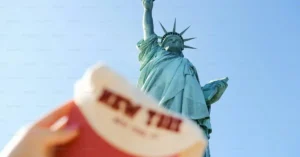The Stripe: From Visual Icon to Cultural Phenomenon
In the vast world of design, branding, and cultural expression, few elements are as deceptively simple yet enduringly impactful as the stripe. At first glance, a stripe is merely a band of color—linear, repetitive, and often taken for granted. But beneath its minimalistic surface lies a deep reservoir of meaning, symbolism, and utility. From fashion runways to military uniforms, and from corporate logos to social justice movements, the stripe has been a silent communicator, an identifier, and sometimes, a rebel.
This article explores the rich history, cultural relevance, and evolving uses of the stripe, peeling back the layers on a symbol that is anything but basic.
A Brief History of the Stripe
Stripes date back thousands of years, appearing in ancient textiles, tribal body art, and ceremonial costumes. But the meanings attached to them have varied dramatically across time and cultures.
Medieval Europe: The Mark of the Outcast
In medieval Europe, stripes were often associated with the outcast. Criminals, jesters, prostitutes, and lepers were dressed in striped garments as a means of visual separation from the rest of society. According to historian Michel Pastoureau in his book The Devil’s Cloth, stripes were considered chaotic and untrustworthy—a departure from the uniformity of solid colors.
This stigma was so strong that, in 1310, a French cobbler was condemned to death for daring to wear a striped outfit deemed inappropriate for someone of his status. The stripe, in this context, was not a fashion statement—it was a label, a form of social control.
Nautical and Military Adoption
By the 18th century, stripes underwent a transformation, particularly in maritime and military contexts. The French Navy began issuing blue-and-white striped shirts—la marinière—to sailors in 1858. The pattern made it easier to spot men who had fallen overboard, but it also gave rise to an iconic aesthetic that would later be embraced by fashion houses like Chanel and Jean Paul Gaultier.
Simultaneously, stripes became a symbol of rank and achievement in military uniforms. Epaulettes, badges, and insignias often included horizontal or diagonal stripes to denote hierarchy or specialization. In this usage, the stripe became a symbol of discipline, pride, and identity.
The Stripe in Fashion: Minimalism Meets Power
Fashion has perhaps embraced the stripe more deeply than any other industry. It offers a unique ability to elongate, widen, flatten, or emphasize form depending on its orientation and use.
Coco Chanel and the Reinvention of the Stripe
In the early 20th century, Coco Chanel revolutionized women’s fashion by introducing striped sailor tops into her designs. Drawing inspiration from French naval uniforms, she turned the humble stripe into a high-fashion statement. Her designs challenged societal norms, bringing androgyny and casual elegance to women’s clothing.
The Power Stripe and Wall Street
In the 1980s, the term “power stripe” emerged in menswear. Pinstripe suits, especially dark-colored ones with thin, vertical white lines, became synonymous with authority, success, and corporate dominance. Worn by investment bankers, lawyers, and high-powered executives, the power stripe became a sartorial tool for asserting dominance without uttering a word.
Today, brands like Prada, Gucci, and Off-White continue to reinvent stripes—experimenting with asymmetry, distortion, and bold color combinations. The stripe has moved from strict lines to expressive art.
Stripes in Branding and Design
One of the most powerful uses of the stripe lies in branding. A single stripe or a set of them can create an instant association in the consumer’s mind.
Adidas and the Three Stripes
No discussion of branded stripes is complete without mentioning Adidas. Its “Three Stripes” logo, originally designed for footwear stability, has become a global symbol of athleticism, youth culture, and streetwear. Adidas has built its identity around the stripe—so much so that it trademarked the design in over 100 countries.
The Stripe as Identity
In the world of graphic design, stripes convey motion, energy, and clarity. Tech companies often use striped patterns in UI design to guide user focus or signal transitions. In architecture and interior design, striped patterns can make a room appear larger or more dynamic.
Even public services use stripes as identifiers. Emergency vehicles, construction zones, and hazard signs rely on high-contrast striped patterns—usually yellow and black—to demand attention and communicate urgency.

Symbolism and Cultural Impact
Stripes are not just aesthetic choices; they carry deep symbolic meanings across different domains.
Pride and Inclusion
One of the most famous examples of stripes being used as a symbol of unity and identity is the Pride flag. Designed by Gilbert Baker in 1978, the original rainbow flag featured eight stripes, each representing different aspects of the LGBTQ+ community—from life and healing to art and spirit. Though the number and arrangement of the stripes have evolved over time, the use of color bands as a visual expression of inclusion and diversity remains globally recognized.
Political and Social Movements
Throughout history, stripes have also been used to represent protest and revolution. From black-and-red anarchist flags to striped prison uniforms protesting the penal system, the stripe has acted as both a badge of oppression and a symbol of defiance.
In the world of sports, striped uniforms often divide teams into legends and underdogs. Who can forget the black-and-white stripes of Juventus, or the vertical red-and-blue of FC Barcelona? These patterns inspire loyalty, rivalry, and emotion.
The Psychology of Stripes
The stripe’s visual impact is rooted in psychology. Vertical stripes can elongate a figure, making it seem taller and slimmer. Horizontal stripes can widen perception or provide grounding.
However the orientation also influences emotional response. Diagonal stripes can imply speed, dynamism, and change. A famous example is the “hazard stripe” pattern, used on roads and machinery to signal caution. It’s not just functional—it triggers a visceral sense of alertness in the viewer.
In retail environments, stripes can guide foot traffic, influence product arrangement, and even affect purchasing behavior. Studies show that consumers often associate striped packaging with modernity, reliability, and precision.

Stripes in Digital Culture
With the rise of digital aesthetics and web design, stripes have entered the virtual world with new significance.
Loading Bars and Progress Indicators
A moving stripe, like a loading bar or a progress indicator, has become a universal symbol of technological patience. It represents motion, anticipation, and completion—all in one simple form.
The Stripe as a Name: A Fintech Giant
Interestingly, “Stripe” is also the name of one of the world’s leading fintech companies, offering payment processing solutions for online businesses. Founded by brothers Patrick and John Collison in 2010, Stripe Inc. chose a name that reflects simplicity, modernity, and streamlined digital infrastructure. While unrelated to the pattern itself, the name evokes clarity and flow—qualities often associated with actual stripes.
Artistic Interpretations
Artists have long used stripes to explore rhythm, movement, and perception. The Op Art movement of the 1960s, led by artists like Bridget Riley and Victor Vasarely, employed stripes to create optical illusions and visual tension. These works challenge viewers to confront their own visual processing, showing that something as simple as a line can be deeply complex.
In contemporary art, stripes are used both literally and metaphorically. They can represent confinement (as in prison stripes), freedom (as in flags), or repetition (as in conceptual installations). The stripe is endlessly flexible—yet always powerful.
Final Thoughts: The Timeless Allure of the Stripe
From medieval marginalization to modern-day empowerment, the stripe has undergone a profound transformation. It has adorned kings and criminals, shaped brands and battlefields, and moved effortlessly from the physical to the digital realm.
Its power lies in its simplicity. A stripe is not just a line—it’s a visual language. It can command, conceal, celebrate, or challenge. It invites the eye to follow, to seek symmetry or discord, to perceive depth or motion. In design, fashion, culture, and protest, the stripe continues to captivate.
So, pause for a moment the next time you see a stripe—on a shirt, a logo, a flag, or a loading bar. Beneath those clean lines lies a story centuries in the making. See More The Stripes Blog











